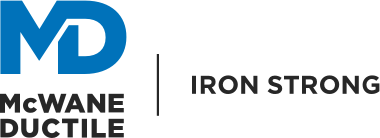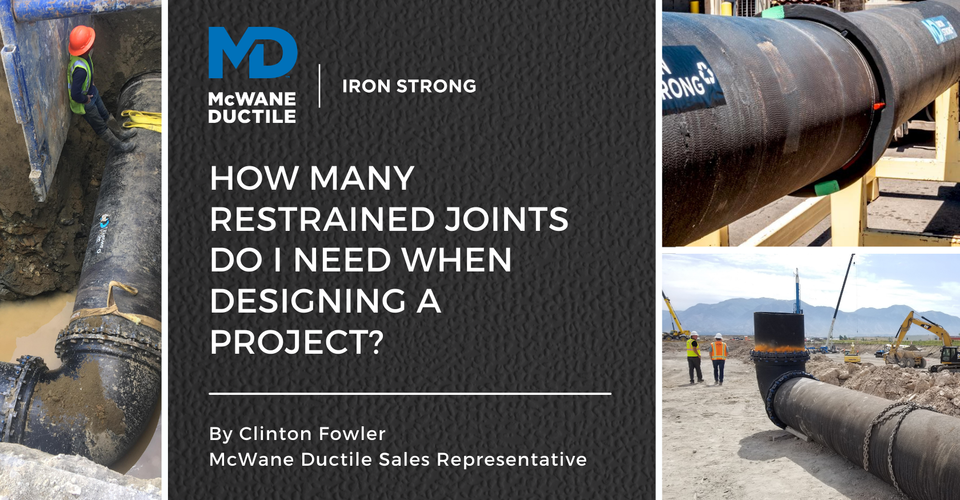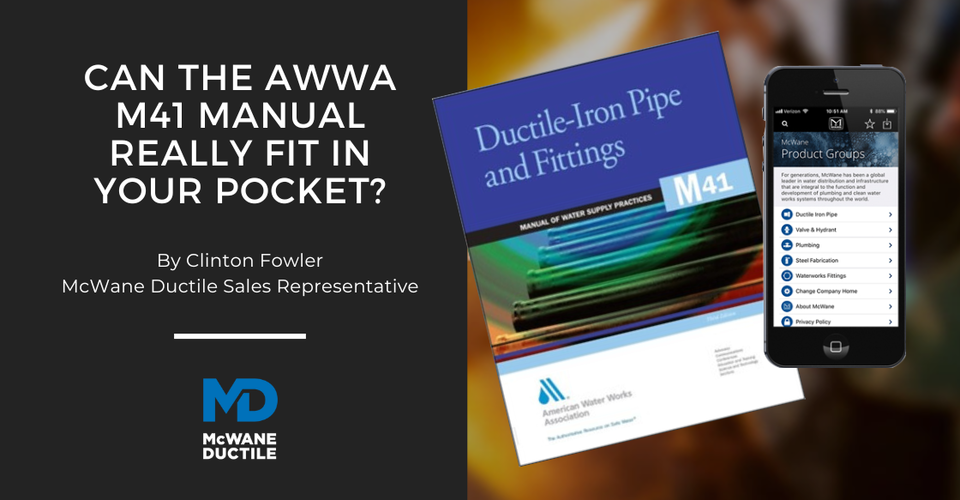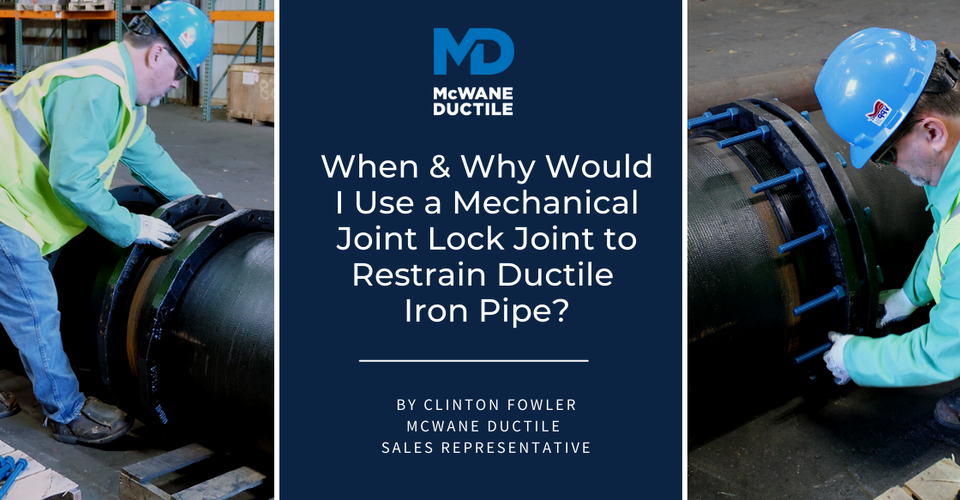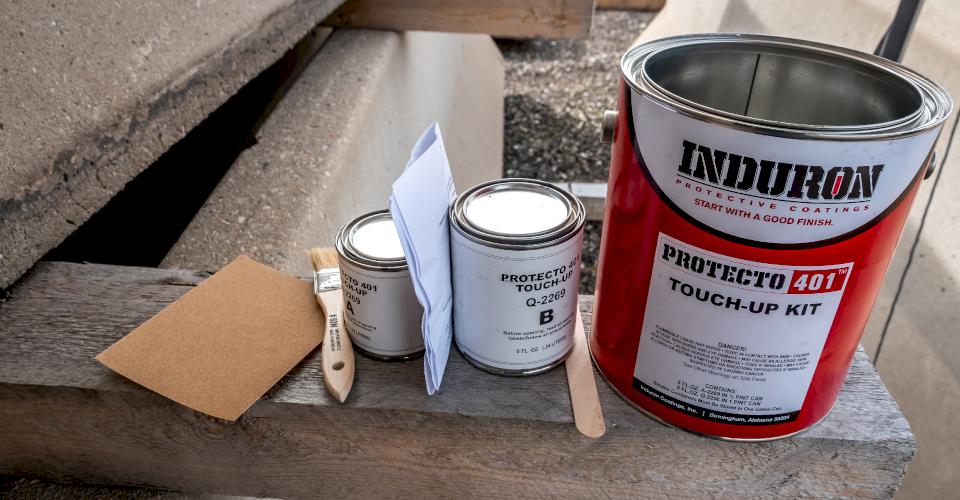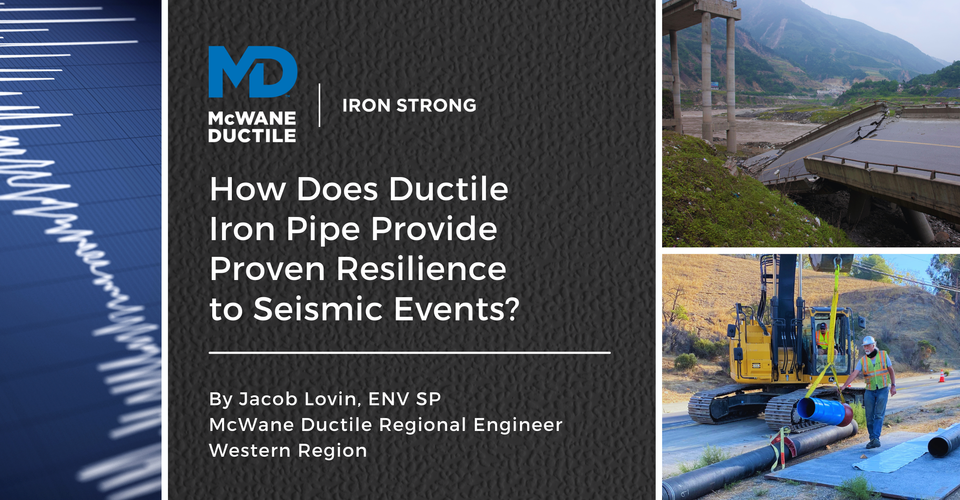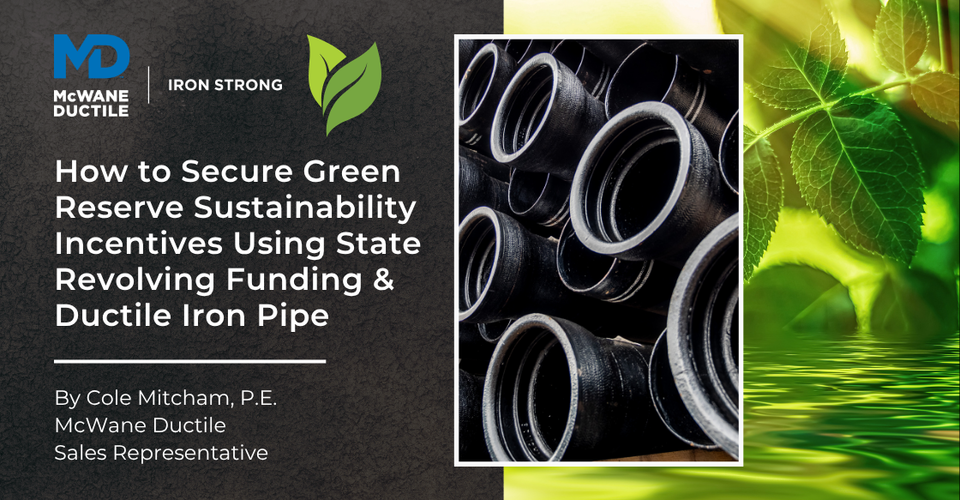-
HOW MANY RESTRAINED JOINTS DO I NEED WHEN DESIGNING A PROJECT?
12/19/2024 In Products TechnicalWhat do balancing a checkbook and restraining Ductile iron pipe (DI pipe) have in common? They are both important skill sets that lead to peace of mind. A typical waterline experiences thrust forces produced by fittings, closed valves, or dead ends. These forces must be "balanced out” or canceled to maintain the pipeline’s longitudinal integrity across the joints. Similar to managing a checkbook, the weight of the pipe, the water contained in it, and the backfill above it, along with the pipeline's friction with surrounding soils, help counteract a portion of the "thrust force" bill. The remaining force must be zeroed out using a calculated length of restrained joint pipe and fittings, following the ASTM/AWWA calculation protocols.
In this #IronStrong Blog, we will explain thrust forces, how they are created in a water line, why they are important, the information needed to calculate them, and how to easily calculate them using the McWane Pocket Engineer™. Once you have those calculations, we will show you what pipe joints to use and in what quantities to make your pipeline restraint secure for generations.
-
Can the AWWA M41 Manual Really Fit in Your Pocket?
03/30/2023 In ProductsAnyone who has ever studied or just skimmed the pages of the AWWA M41 Manual (M41) knows it helps to be of an engineering mindset to understand most of what’s within it. What if you could turn this indispensable reference into a simplified, easy-to-access tool that fits your pocket? Well, the McWane Pocket Engineer does just that! In this Iron Strong Blog, we will discuss the many Pocket Engineer (PE) components and how this real-time application utilizes important aspects of the M41 Manual to simplify life for you, the water professional.
-
When and Why Would I Use a Mechanical Joint Lock Joint to Restrain Ductile Iron Pipe?
06/30/2022 In Our Company Products TechnicalWhen it comes to restraining a water line, what comes to mind? Thrust blocks? Sure Stop 350® Gaskets? (locking gasket), TufGrip™ (wedge-action retainer gland), or maybe the standard default choice, TR Flex®? (Ductile iron restrained joint pipe). There is another option that might not regularly come to mind. It is known as Mechanical Joint Lock Joint or MJLJ for short. We will look at how the joint works, how it is installed, and locations where the MJLJ may be preferred.
-
What Are The Benefits of DI Pipe vs. Concrete Cylinder Pipe?
09/02/2020 In ProductsPrestressed Concrete Cylinder Pipe (PCCP) has been used in water and wastewater applications for nearly 80 years. The thought process behind PCCP was sound, in that it would combine concrete's high compressive strength with steel's high tensile strength. However, like many products, PCCP has continued to fall short in the following years in many comparative categories to Ductile iron.
-
How to Repair Protecto 401™ Lining in The Field
04/18/2019 In Products TechnicalWhen talking about ductile iron pipe in sewer applications, many times Induron’s Protecto 401™ comes to mind. Protecto 401 lining has often been the specified lining for ductile iron pipe in sewer applications more than 50 years.
Common uses for Protecto 401 are for a sewer force main that may not be fully running, where trapped air may exist, where chemical resistance is required, or for abrasion resistance. There may be occasions in the field when patching of the Protecto 401 lining may be necessary.
Latest Posts
- Developing an Asset Management Plan for Your Future Utility or Engineering Organization 12/04/2025 In Comparisons Industry
- Can Joining Water Works Industry Organizations Help You Grow Professionally? 10/21/2025 In Careers WaterWorks
- How Does Ductile Iron Pipe Provide Proven Resilience to Seismic Events? 09/04/2025 In Products Resiliency Technical
- How to Secure Green Reserve Sustainability Incentives Using State Revolving Funding & Ductile Iron Pipe 07/29/2025 In Energy Products Technical
